Dar Urtatim:
What they could have worn
in Jerusalem in 1184
|
The film "Kingdom of Heaven", which took place around circa 1180, was a popular film among SCAdians. Unfortunately the costuming of the "Middle Easterners" was completely wrong, except for one guy, who had a speaking part, but died pretty soon. And the female lead mostly wore 19th century Ottoman clothing, along with Central Asian jewelry on her head. Yes, it's a fantasy, but too often people believe that film costuming is somehow historical. I was not able to find pictures from the period of the film, but I do know of quite a bit of art from the early 1200s, so i'm presenting some here for those curious about what they could have been wearing in Jerusalem at the time of "Kingdom of Heaven". Local people regardless of religion would have dressed similarly - although there would be differences such that the locals could tell each other apart. And of the Europeans who had moved there, some began adopting local dress or aspects of it, too. The following were selected to show both men and women. They were all painted in Syria or Iraq, whose styles were so similar at that time that scholars often can't tell them apart, and date from 1222 to 1237, except as noted... Some are clickable for a closer look... |
From an Arabic language copy of De Materia Medica written by the Greek Diocorides - 1229 - Syria | |
These two paintings, above, show Roman, or at least Rumi, i.e., Byzantine, influence. | |
From the Maqamat of al-Hariri - Ms. arabe 6094 - 1222 - Syria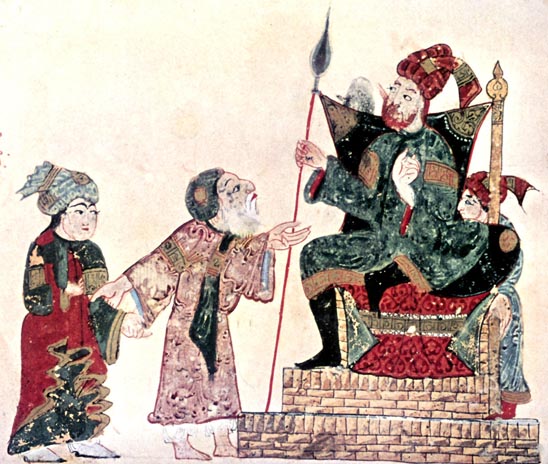
| |
| | |
From a Maqamat of al-Hariri | |
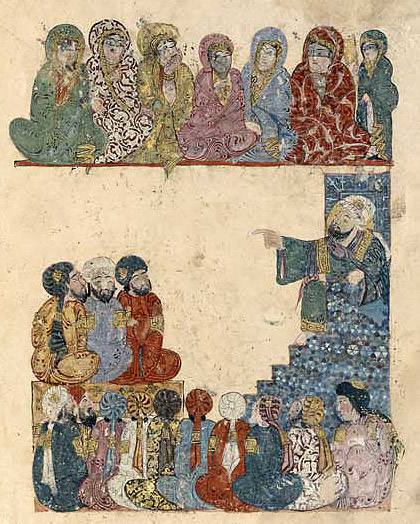
Notice the variety of modesty accessories the women use | 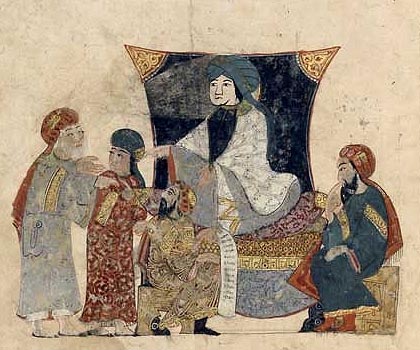
The page had been damaged and the face of the qadi (judge) has been badly repainted in more recent times. |
| | |
Four Illustrations from
| |
 |  This woman wears sleeves fashionable in the cities |
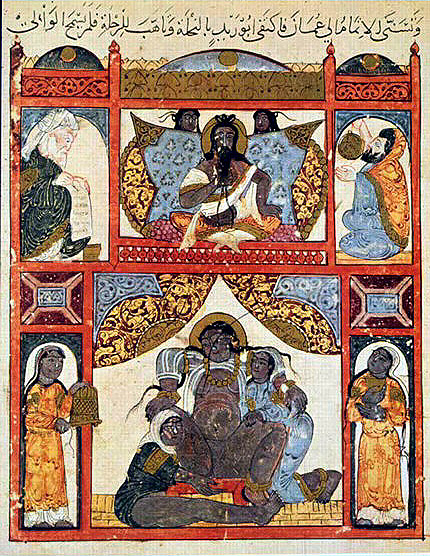
A noble woman giving birth accompanied by attendents |
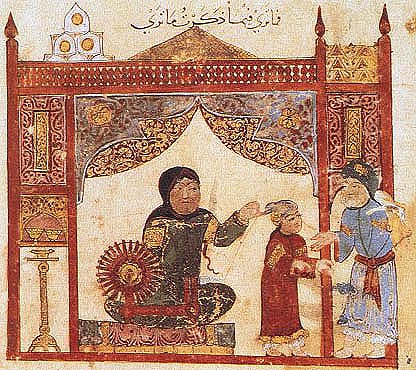 A woman spinning cotton or silk. |
| | |
I don't know from what manuscript this comes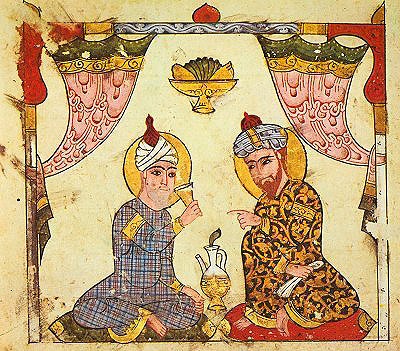 The style reflects a combination of Syrian/Iraqi (as seen in the Maqamat paintings) with elements of Seljuk, especially in the draperies and the blue headwrap...
|
A scene from a Seljuk love story of the early 13th century, Varka and Gülshah...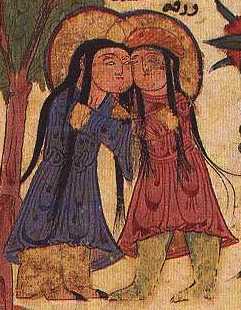 Both Varka, a young man, and Gülshah, a young woman, wear long dreadlocks or braids. Their shalvar (long trousers) have straight legs, neither poofy or gathered.This is here for stylistic comparison. The clothing of the Seljuks is from Cenral Asia, a different vetimentary system than that of people in the Levant, Syria, and Iraq at thi time. |
|
Back to the Dar Urtatim Clothing Courtyard Back to the Dar Urtatim Directory Questions? Comments? Suggestions?
You can write to me here. |

